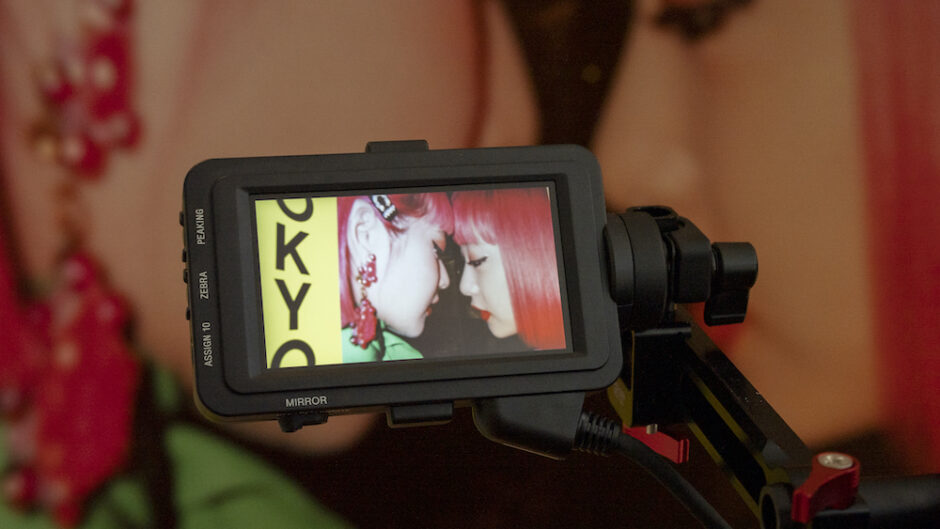Get ready for TOKYO STORIES: a wild ride through the vibrant and creative capital of Japan, with Exhibition on Screen’s latest release. From the makers of the popular art documentary ‘Vermeer: The Greatest Exhibition’, TOKYO STORIES explores the fascinating world of art in Tokyo, showcasing the stunning works of artists who have been inspired by this constantly evolving city.
The film takes viewers on a mesmerising journey through 400 years of Tokyo’s art history, featuring everything from traditional woodblock prints to the latest contemporary works of art created on the city’s streets. Directed by David Bickerstaff, the film highlights the stories of the artists behind the art, including the likes of Moriyama Daido, Mika Ninagawa, and Keiichi Tanaami, among others.
TOKYO STORIES also sheds light on the hugely successful TOKYO exhibition, which took place at the Ashmolean Museum in Oxford in 2021, bringing a fresh, diverse audience to the space.
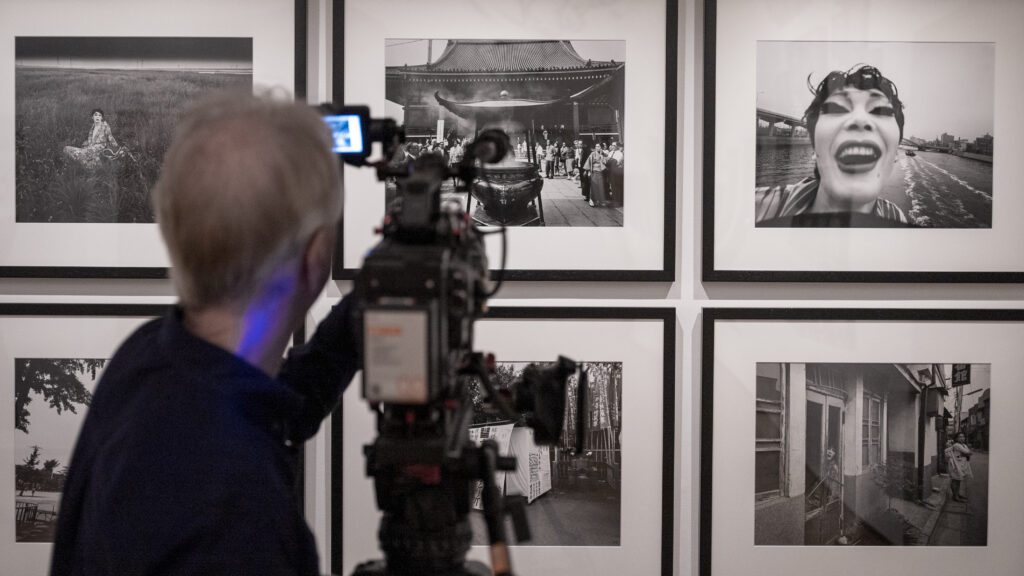
Fused grabbed a chat with the film’s director David Bickerstaff about the fascinating insight into one of the world’s most extraordinary cities and the artists that made it what it is today!
How did you approach the challenge of representing the complex and multifaceted nature of Tokyo in your film?
Most of the films we make at Exhibition On Screen are based around landmark exhibitions and Tokyo Stories was based on a sensational exhibition at the Ashmolean Museum called Tokyo: Art and Photography. The curators were very clear with their narrative and how to represent the multi-faceted nature of Tokyo’s cultural history. They had selected important examples of Japanese art and a range of artists, historic and contemporary, that best supported the story they wanted to tell. This is a great help for us in formulating our own script and devising the narrative flow for our own story. So we always start with the exhibition catalogue and plan the key interviews that will deliver an engaging and informative experience over 90 minutes. Through the process of interviewing and our own research, the plot develops and the works we need to film become more identifiable.
What were some of the main ideas or concepts that you wanted to convey?
We wanted to show a broader sense of the development of Tokyo from its roots as a marshy estuary to the mega metropolis it is today. To tell the story of artistic innovation and cultural endeavour that shifted over time as each political and cultural movement developed. We wanted to build a portrait of everyday Tokyo, told through the eyes of a wide range of artists, historic and contemporary. Voices that may challenge any misunderstood notions or misconceptions about what Japanese culture is and the role art can play in defining the identity of a city.
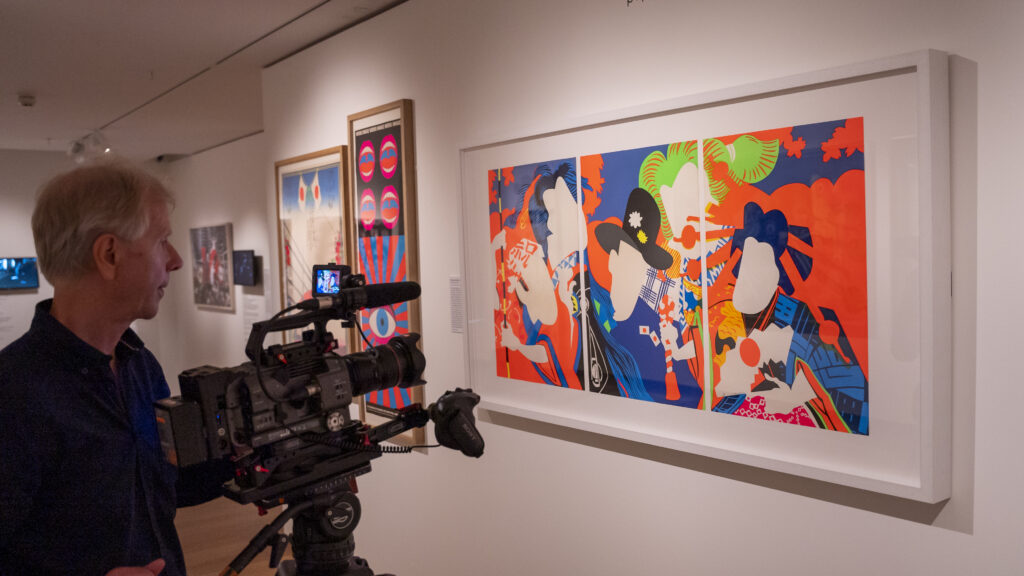
What surprised you the most about Tokyo’s culture?
The biggest surprise for me was how politically active and reactionary the citizens of Japan and Tokyo became in the early 60s. Before this project, I was not so aware of the post war ANPO movement where there were protests and riots against the occupation of America in Japan. The rise of reactionary photography and performance during this period was fascinating to me. I love the Vivo group of photographers and feel very privileged to have interviewed artists like Moriyama Daido and Tanaami Keniichi for our film who really encapsulated that spirit of freedom, experimentation and passion for their craft. I also enjoyed finding out more about the artist collectives in Tokyo like Chim↑Pom from Smappa!Group who are very individual in their approach to art, innovative, anarchic and willing to push the boundaries of what art is.
One of the themes of ‘Tokyo Stories’ was cultural identity and the tension between tradition and modernity. Can you talk a bit about how you approach this theme and the ways in which it manifests in the film?
Artists generally reflect the ‘concerns of the day’ in their work. So to survey an artistic output over 400 years becomes a good measure of the ideas and societal structures of a nation over a long period of time. We were interested in how the past spoke to the present through a diverse range of artists and their practices. Japan is such a visual culture and stories are often told through pictures and with a range of mediums. I was very keen to ask the contemporary artists in our film how they viewed traditional Japanese art from the past and whether the formal structures embedded in Japanese culture informed the way they made art, the subjects they chose and if their own work reflected on contemporary society. The film is constructed in chapters defined by a series of themes. So we start the film by highlighting some of the misconceptions about Japanese art and then start a journey though Tokyo’s cultural history, from beginnings to the present day, moving seamlessly from the exhibition spaces to the streets of Tokyo and back again, offering narrative connections between the past and present.
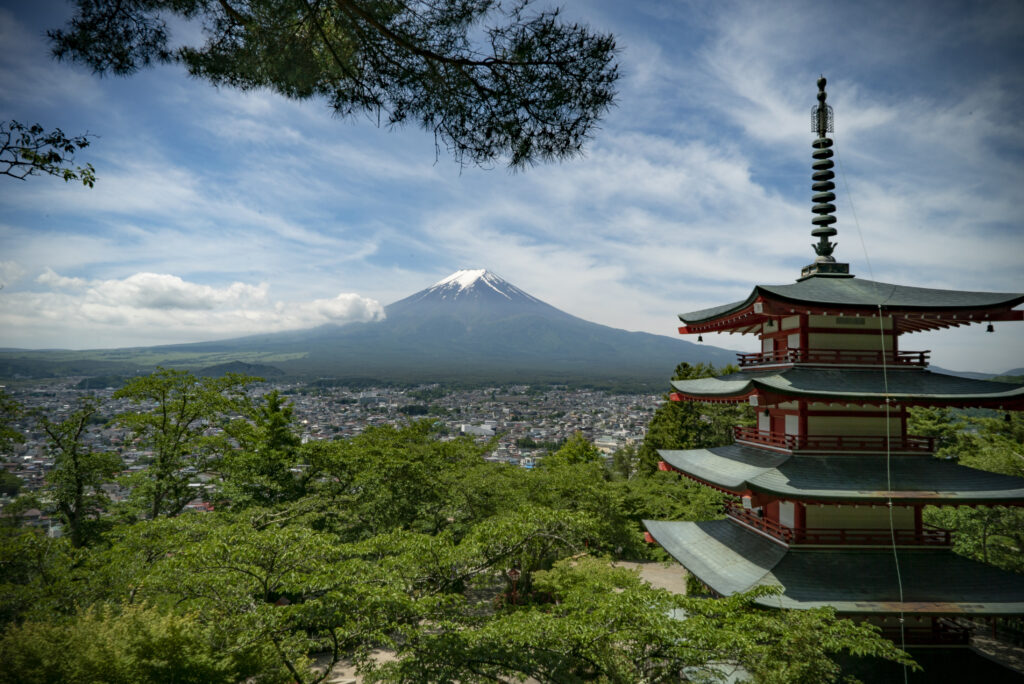
How did you approach translating the sensory experience of Tokyo onto the screen and were there any particular challenges in doing so?
Tokyo is a city of contrasts and sensory experiences. One minute you are in the crazy neon surrounds of Shinjuku and Shibuya, next you are in a pristine parkland with religious temples and pools of calm water, full of Koi. Armed with several different cameras ranging from iPhones to DSLRs and Cine cameras, we decided to shoot anything we thought interesting, as if we were compiling a visual essay of the city. So we ended up with a lot of material which we used in various ways – from quick animated sequences that generated the energy of a ‘snap shot’ as you travel though a city, to longer, slower sequences that encourage contemplation and meditative thought. I also wrote a prose-like text that reflected my own observations and memories of the city, which then became the narrative voice that introduces the various chapters in the film. It was quite a challenge to get the balance right and not to fall into the trap of presenting a stereotypical idea of what Tokyo is, but to subvert that with authentic Japanese voices and contemporary points of views.
Can you tell us about your personal relationship with Japanese culture and how it has influenced your work throughout your career?
Japan has always been a source of fascination for me though my knowledge was defined by how it was mediated in film, literature and popular culture. I grew up with Osamu Tezuka’s manga like ‘Kimba the White Lion’ and ‘Astro Boy’ which was my favourite programme as a child. Growing up in Australia, Japan was always talked about in the news and its post war industrial growth was the envy of the world. I was a bit like someone who engaged with Japanese culture though magazines and travel documentaries but had never travelled there.
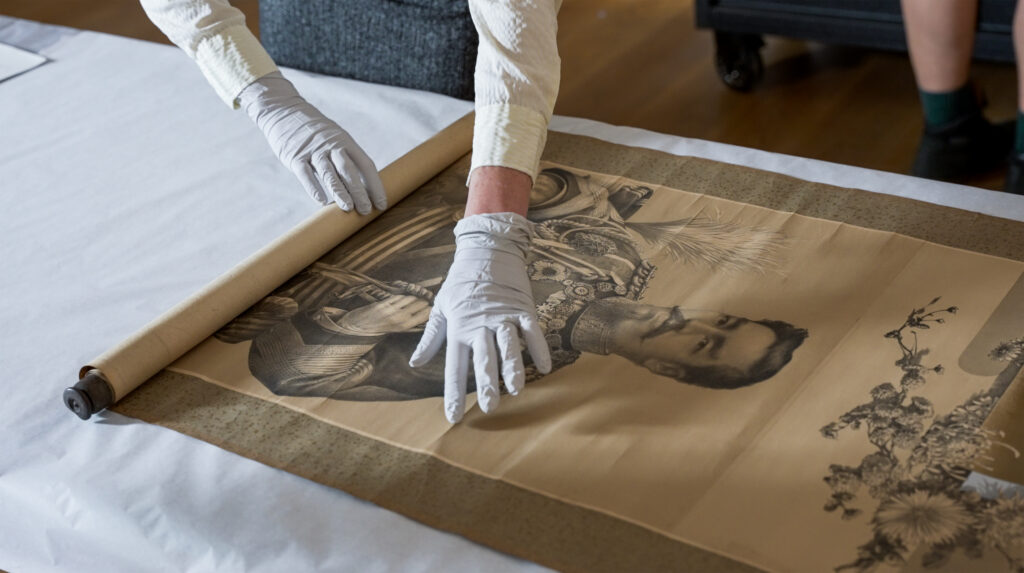
‘Tokyo Stories’ features a diverse cast of characters, from artists to activists to entrepreneurs. Did you have any particular themes or messages in mind when selecting these individuals and how did you ensure each story was given equal weight and attention?
It is always an editorial balancing act to construct a story over ninety-minutes that is engaging for audiences who are looking for a meaningful and cinematic experience. Artists and experts give up their time freely to contribute to your film so I always feel it is essential to be truthful to what they say, to give space to their work and to place them in the story where they are most effective, where they add to the richness of the film’s narrative arc. Before each interview, we would decide on what aspects of their work we would like them to talk about and how that fits into the overall themes being explored in the film. Of course, having the exhibition at the Ashmolean as our central narrative base meant that many of the key works and the artists had already been identified. So we had our cast of artists and their work described but what we needed to do was to construct a meaningful experience for our cinema audience.
How has your personal relationship with Japan changed after making this film?
I have travelled to Japan three times now and my experience of the place has been so different every time. I am still trying to figure it out! The one thing I can say is, filming in Tokyo leaves an indelible mark on your memory that constantly enters your dreams and challenges the way you think about how people live and engage with a megalopolis that is constantly changing the shadow of its complex history and cultural life.
TOKYO STORIES will be in 200 cinemas across the UK & Eire – and 1000+ worldwide from 23rd May.
For more information visit exhibitiononscreen.com

